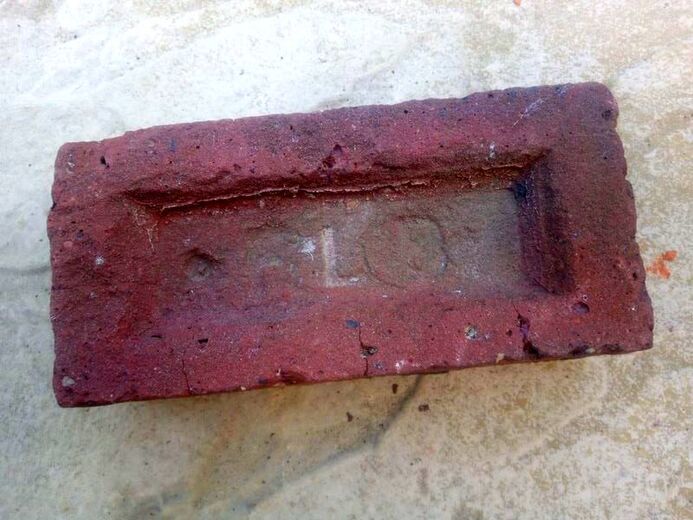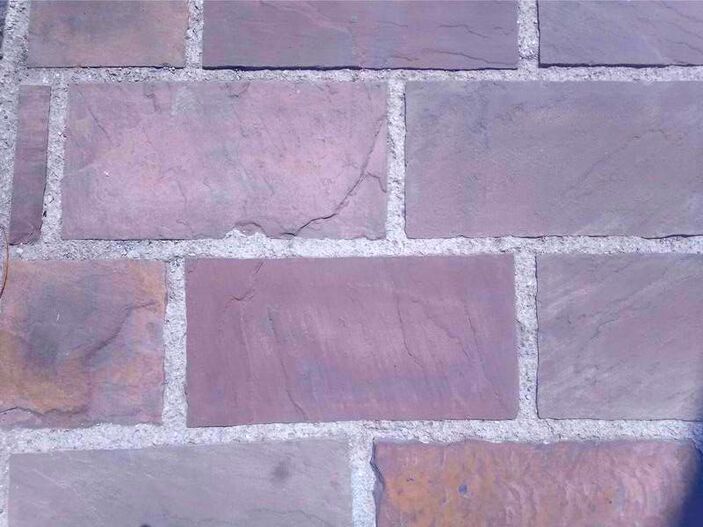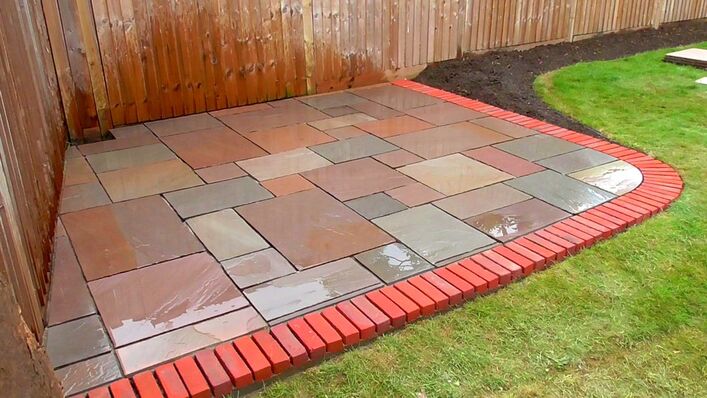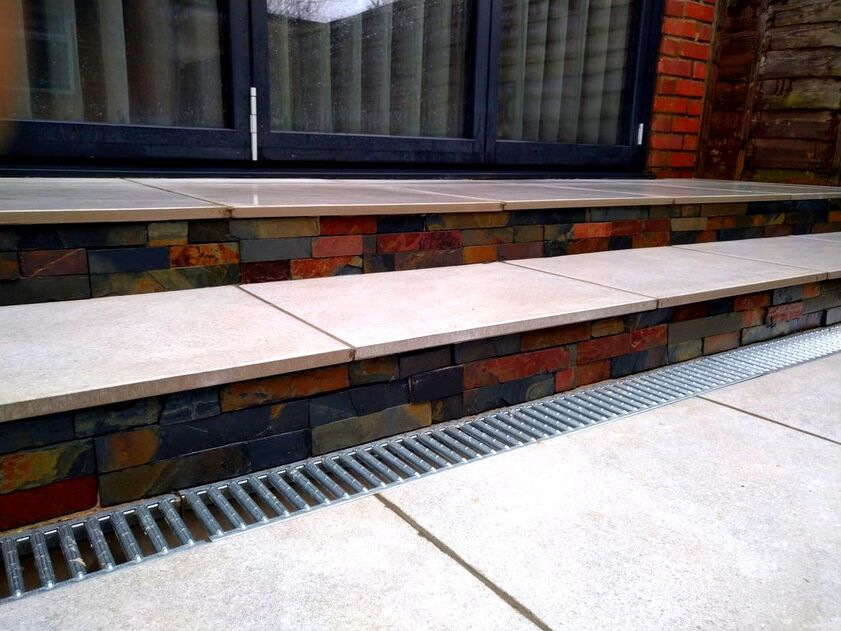|
This article contains affiliate links
When it comes to garden landscaping, bricks are one of the most versatile and decorative building materials.
Not only can bricks be used for building walls but also raised beds, patio borders, pathways, mowing strips, patio and garden edging. One of the biggest advantages of using bricks in garden landscaping is they are made from natural, materials. This is means their colours are less likely to fade in sunlight like concrete substitutes. Bricks also offer a pleasant visual texture representing a variation of natural tones and shades. These not only can look attractive close up but also at a distance. In this article I will answer common questions about garden and landscaping bricks. I will also explain which bricks are suitable for various garden and landscaping installations. What bricks can you use for garden landscaping?
Almost all bricks are manufactured to construct buildings or outdoor facing structures of some kind. Therefore all bricks can be used for garden or hard landscaping projects. However, depending on the type of landscaping you intend some bricks may be better than others. Some soft and absorbent bricks may not be the best option for saturated soil. Such bricks in damp conditions could be vulnerable to frost damage in time. On the whole however bricks are a robust and durable material suitable for garden landscaping use.
Brick steps I built in Kilburn, London, using Sevenoaks Yellows Bricks
What are the best bricks for a garden wall?
Even though most bricks are suitable for garden walls and general landscaping not all look the best. The best bricks for garden landscaping have deep, multi-tonal, variations which compliment surrounding garden landscaping. Small blotches and imperfections during firing process provide more visual texture, rusticity and interest. Such bricks normally compliment many types of paving and planting well. Unlike indoor materials landscaping bricks are subject to numerous staining threats. Bird poop, tannins from plants, mud and microscopic plants can all blemish external surfaces.
Garden wall in Eailing, London, I built using Marshalite walling bricks
Therefore a garden brick should have some variation and speckling to counter slight discolouration.
The best garden bricks for modern style landscaping can have consistent colours but must be sealed or have a glazed finish. A good example of these would be engineering bricks or glazed bricks. 8 of the best landscaping bricks for garden walls
Throughout the years many clients have asked what bricks are the best for specific garden landscaping. I have found that for the vast majority of landscaping scenarios there are eight preferred garden bricks. These eight include; Ashdown bricks, Chailey rustic bricks, Thames yellows, Old stocks, Blue engineering bricks, Marshalite walling bricks, Tegula walling blocks and Sandstone walling. These were chosen based on their aesthetic qualities and being able to easily integrate into any landscaping theme. 1. Ashdown bricksAshdown bricks are a clay brick which are quarried from clay deposits in the south of England. They have a high thermal mass and extremely durable. During the firing process minerals within the clays produce pleasant shades of reds, oranges, purples and even pinks. This gives them an aesthetic appeal and can provide an interesting texture to garden projects. Ashdown bricks also suite a variety of paving products including popular sandstones and flagstones. There are a few different types of Ashdown bricks and most are stocked at Travis Perkins.
Side face view of Ashdown brick
Top view of Ashdown brick
2. Chailey rustic bricks
Chailey rustic bricks are red, sand faced, stock bricks suitable for most masonry projects. These bricks have bright colour tones and contrasting dark black blotches. Their rustic look makes them perfect for use in more traditional and cottage type gardens. It is important to note that Chaileys do have more porosity and a higher absorption rate. Therefore, these are less desirable for flush edgings at ground level if you have boggy soil. However, Chaileys are effective for walls of varying sizes and look effective in many different building projects. These bricks are also available for delivery from Travis Perkins here.
Side view of Chailey rustic brick
Top view of Chailey rustic brick
3. Old stocksOld stock bricks were produced around the turn of the 20th century during the Victorian era. During the late 1890’s around a hundred million of these bricks were produced every year for new housing around London. As transporting heavy loads was expensive, brick earth around London was excavated for brick clay. This was fired to produce the building material which built Britain's capital city London. Clay was pressed into wooden moulds, often by child labour, consequently preventing distortions and imperfections. This has led old stocks to becoming a popular brick for historical renovations and restorations. Old stocks have also become very popular landscaping and garden bricks.
Side face view of ALondon stock
Top view of a London old stock
4. Thames Yellows
Often thought of as the original London old stock substitute the Thames yellow provides a new, old stock substitute. The Clay for this brick typically quarried from the Smeed Dean brickworks next to the River Thames. These bricks have bright yellow tones with town ash spotting which provides a traditional appeal. Their light buff colour makes them a favourite accompaniment to many types of buff paving and copings. Thames yellow bricks are commonly used in landscaping alongside buff Indian sandstone and buff manufactured paving.
Side face view of Thames yellow brick
Side face view of Thames yellow brick
5. Blue engineering bricks
Very much like standard bricks engineering bricks are made using clay. These bricks however are made from very high quality clay and fired at very high temperatures. This enables the brick to almost for a glazed surface making it impervious to water. Consequently engineering bricks have a high resistance to moisture and acidic conditions. This had led to their extensive use in external construction and challenging environments. These bricks also have bright colours making them aesthetic in the correct situation. Blue engineering bricks go very well with black limestone and slate paving. They also make fantastic garden edging to compliment dark grey or black paving.
Side, face view of blue engineering brick
Top view of blue engineering brick
6. Marshalite walling bricks
Marshalite pitched split face walling is a landscaping brick manufactured to imitate natural stone. These walling blocks have become very popular providing a natural stone look with a rough texture. What is even more desirable is they are easily split down to smaller units. These can be used vertically to the top of walls to create a dry stone wall effect. This can be seen in the image below where I laid smaller split block vertically for a jagged finish. Marshalites are very effective landscaping blocks but do have one main disadvantage. The colour dyes within the concrete do eventually fade with age. Acids within rain can result in very old blocks becoming porous and susceptible to algae blooms. This can lead to a dark discolouration far removed from their original aesthetic.
side face of marshalite walling
top of view of marshalite walling
7. Tegula walling
Created by Marshalls to accompany their Tegula block paving range these landscaping blocks are durable and effective. Tegula walling is some of the most attractive landscaping bricks on the market. Their slim profile and autumnal colours give them a real natural stone effect and pleasing visual texture. These garden blocks are particularly efficient at creating raised beds and retaining walls. Although durable, if faced in full sun expect some colour fading after around ten years. Like most landscaping bricks they will benefit from sealing with a weatherproof sealant.
Side face of tegula walling
Top view of tegula walling
8. Indian sandstone walling
Indian sandstone has become a much loved natural stone material which is both affordable and versatile. Indian sandstone walling like paving comes in a broad variety of colours and sizes. As the bricks are natural stone their colours will not fade like concrete substitutes. As their faces cover less surface area per weight compared to thinner sandstone paving they are more expensive. Expect to pay at least three times per square meter than the paving equivalent. However Indian sandstone walling is probably one of the most durable and attractive landscaping blocks on the market. Their natural look and unique geology means aesthetic properties will not degrade in time. Therefore although costly, represent some of the best value in regard to landscaping bricks. What is the best brick to match a sandstone patio?
Sandstones typically come in shades which range from buffs to greys. Traditionally it is best to use decorative bricks with a good visual texture to compliment sandstone paving. Therefore Ashdown, Chailey, Thames yellow and Old stocks are the best bricks to match sandstone. What is the best brick to match a slate patio?
Due to slates clean, impervious surface and dark tones landscaping bricks should match these characteristics. Therefore the best brick for slate would be blue engineering bricks or Staffordshire blues. However due to slates use in contemporary gardens vertical walls and steps are rarely built with brick. It is more typical to use tiles, cladding or render using lighter colours to contrast the slate. This can be seen in one of our projects below where we used porcelain stack cladding. What is the best brick to match porcelain paving?
Black engineering bricks and Staffordshire blues would be the best dark bricks to match porcelain paving. If you would prefer lighter colours then a white glazed brick white a white joint would be best. As with slate, porcelain paving’s contemporary style makes stack cladding and rendered surfaces more suitable for vertical surfaces. What is the best brick to match block paving?
Block paving comes in a wide variety of colours, sizes and products. However, it is always dark red bricks with mottled colours that always work the best. I would say without a doubt Ashdowns and Chailey Rustic bricks are the best match for block paving. If you are using more contemporary Tegula block paving then Tegula walling is also an effective match.
Chailey rustic bricks with tegula block paving
What are the best brick alternatives for garden walls?
If you desire a different look for your garden walls than traditional bricks you have a few options. In a structural sense you are best building your walls with either bricks or concrete blocks. Concrete blocks are cheaper and faster to lay. The vertical faces can then be clad with one of the four options below. Sandstone blocks are also an option but can be a very expensive method of building walls. Rendering
Rendering is the process of simply applying a 10mm smooth layer of rendering mortar to masonry surfaces. This is often then painted a particular colour of choice, regularly white or cream.
Concrete block rendered and painted white
Cladding
There are many forms of external cladding on the market, many taking the form of a bulky textured tile. Some good examples are stack cladding such as porcelain and slate for modern garden designs. For rustic gardens there are some very effective dry stone wall cladding products also available. These are perfect for Tuscan, Mediterranean, Tropical, Succulent orDesert garden schemes.
Porcelain stack cladding
Paving
If you want to add some real interest to garden walls you can clad them with paving. This is particularly effective with natural stones such as slate or sandstone. For a rustic look you may wish to lay broken sandstone in a crazy paving pattern to garden walls. This is very common in Mediterranean countries and if done well looks very effective. You will need a strong external tile adhesive and very skilled and careful jointing.
Brazilian black Slate paving
Tiling
Tiles are also a very good choice for covering garden walls and come with so much choice. It is best to choose an external grade tile and adhesive suitable for the outdoors. These are great for traditional Moroccan gardens or more quirky modern gardens.
Thank you for reading our article on the best garden and landscaping bricks. Below I will link to some other articles you may find informative. If you enjoyed this article and found it useful, why not share it with your friends?
'As an Amazon associate I earn from from qualifying purchases'
0 Comments
Leave a Reply. |
The Author
|
Landscaping services across Buckinghamshire, Amersham, Aylesbury & High Wycombe
Hyde Heath, Amersham, Buckinghamshire |
|































